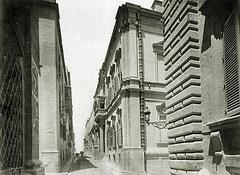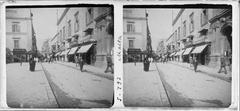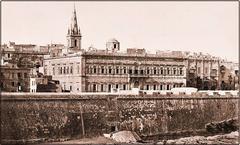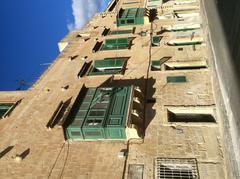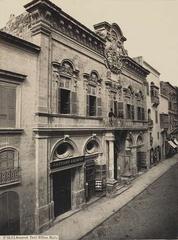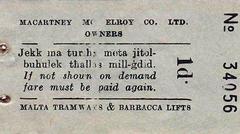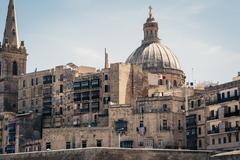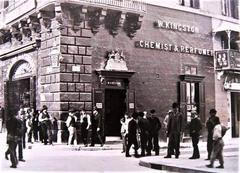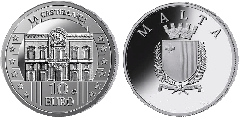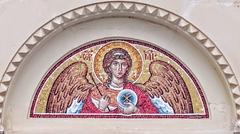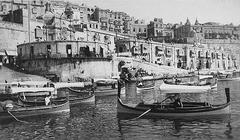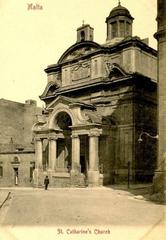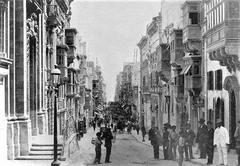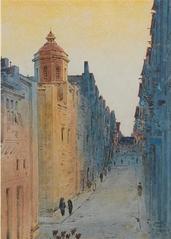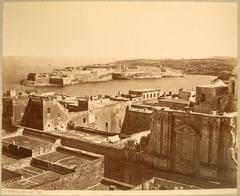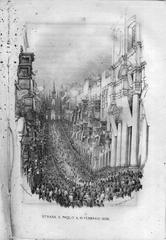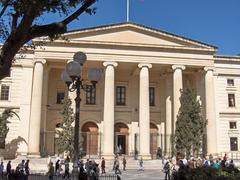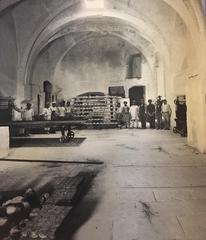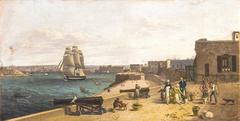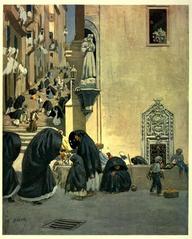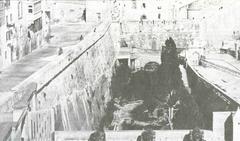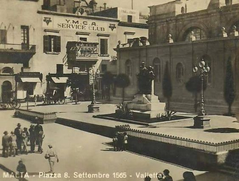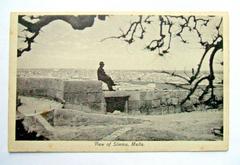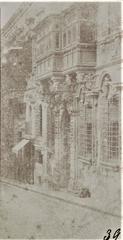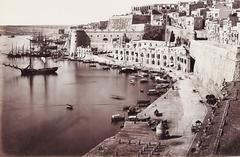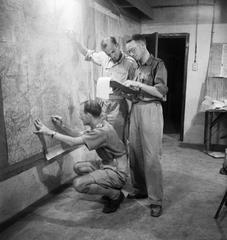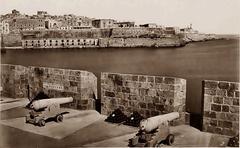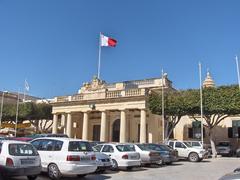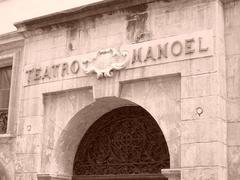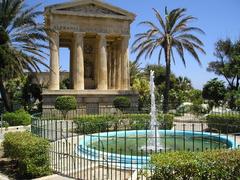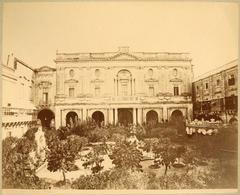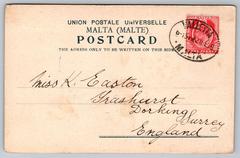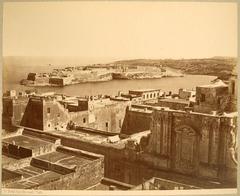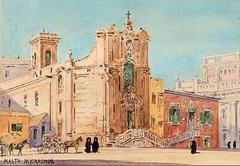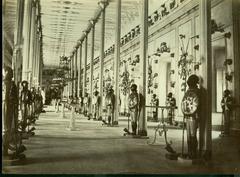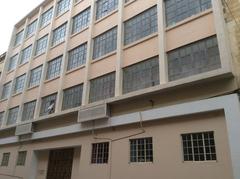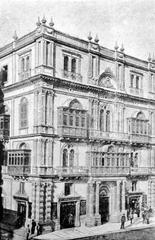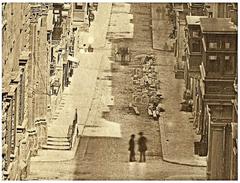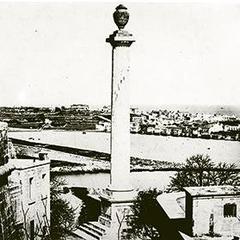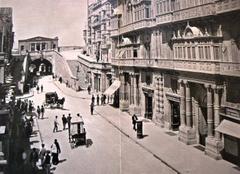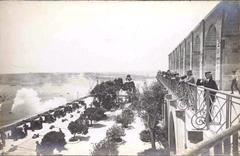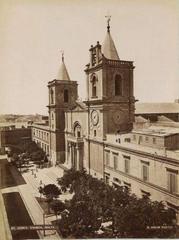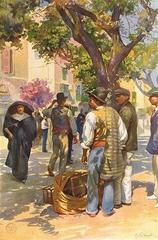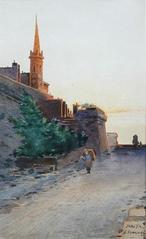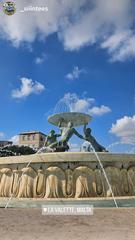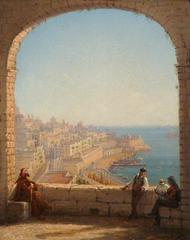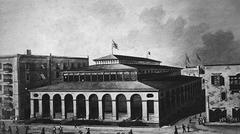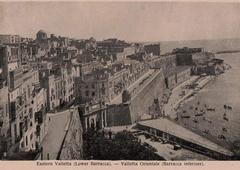Fortifications Interpretation Centre Valletta Malta: Visiting Hours, Tickets, and Historical Sites Guide
Date: 14/06/2025
Introduction
Nestled within the fortified city of Valletta, Malta, the Fortifications Interpretation Centre (FIC)—also known as the Fortress Builders—serves as a gateway into the island’s rich military heritage and architectural legacy. Housed in a meticulously restored 16th-century warehouse next to St. Andrew’s Bastion, the centre offers a deep dive into Malta’s storied past, from Bronze Age defenses to World War II fortifications. Through interactive exhibits, scale models, and multimedia displays, visitors gain insights into the evolution of military architecture that has shaped Malta’s identity and resilience over centuries.
Designed to engage a diverse audience, the FIC blends education with accessibility. Bilingual interpretation panels, interactive touchscreens, audiovisual presentations, and children’s workshops make the experience both informative and family-friendly. Its strategic location on St. Mark Street provides direct access to Valletta’s historic ramparts and panoramic terraces overlooking Marsamxett Harbour and Fort Manoel, offering visitors a blend of history and breathtaking views.
This guide provides detailed and up-to-date information on visiting hours, tickets, accessibility, exhibits, travel tips, and nearby attractions to help maximize your experience at this unique Valletta landmark (Guide to Europe, Evendo, Times of Malta).
Table of Contents
- Origins and Historical Context of the Fortifications Interpretation Centre
- Significance in Malta’s Military Heritage
- Restoration and Adaptive Reuse of the 16th-Century Warehouse
- Visitor Information
- Exhibits and Visitor Experience
- Practical Tips for Visitors
- Frequently Asked Questions (FAQ)
- Conclusion and Call to Action
- References
Origins and Historical Context
The FIC occupies a 16th-century warehouse, originally constructed to store goods for ships arriving at Marsamxett Harbour. Its location adjacent to the former Marsamxett Gate and the Falconeria armoury suggests military as well as commercial use. The structure sits near St. Andrew’s Bastion, providing direct access to Valletta’s defensive walls and panoramic views over Marsamxett Harbour and key fortifications like Fort Manoel and Fort Tigné (University of Malta PDF).
Valletta itself, founded in 1566 by the Order of St. John following the Great Siege of Malta, was designed as a model fortified city reflecting Renaissance military architecture. The FIC encapsulates this legacy, tracing the development of fortifications from the Bronze Age through Roman, Medieval, and Early Modern periods.
Significance in Malta’s Military Heritage
Malta’s fortifications have served as bulwarks against invasion for centuries, representing a continuous evolution in military strategy and engineering. The FIC acts as both museum and research hub, revealing the story of these defenses and their pivotal role in Mediterranean history. Through immersive exhibits and expert interpretation, visitors can explore Malta’s transformation into a fortress island—from ancient walls and bastions to the city’s role in the Great Siege of 1565 and the Second World War (Guide to Europe).
Restoration and Adaptive Reuse
Conservation Philosophy & Architectural Interventions
The transformation of the warehouse into the FIC was part of a wider effort by Malta’s Restoration Directorate to conserve and adapt key historical structures. Funded primarily by the European Regional Development Fund, the €2.1 million “The Fortress Builders” project preserved original masonry and timber while introducing sustainable modern features, such as photovoltaic panels and rainwater collection systems. Accessibility was a priority, with ramps, lifts, and new construction enhancing public access without compromising the building’s historical integrity (University of Malta PDF).
Exhibition Design & Educational Facilities
The centre’s interior includes a restored Valletta City Gate drawbridge, interactive exhibits, children’s workshops, a reference library, and a lecture hall. Audiovisual presentations and scale models help demystify complex concepts in military architecture, making them accessible to all visitors.
Visitor Information
Location & Accessibility
The FIC is at the bottom of Triq San Mark (St Mark Street), Valletta, adjacent to St Biagio Steps and below St Andrew’s Bastion. Its central location allows easy walking access from City Gate and the main bus terminal, making it convenient for visitors arriving by public transport or cruise ship (Malta Uncovered).
The building is designed to be accessible, with lifts or ramps provided where possible. Visitors with mobility challenges are advised to contact the centre ahead of their visit to confirm specific arrangements.
Visiting Hours
- Standard Hours: Tuesdays and Fridays, 10:00–16:00
- Note: Closed on public holidays and may operate special hours during events. Always check the official Facebook page or Heritage Malta website for updates.
Tickets and Admission
- Admission Fee: €2 per person (as of 2025)
- Discounts: Free for Heritage Malta members and Heritage Malta Passport holders
- Purchase: Tickets available on-site; online booking may be available for special events (Malta Uncovered).
Facilities
- 27 bilingual interpretation panels (Maltese and English)
- 18 interactive touch-screen kiosks
- Audiovisual screens with 3D reconstructions
- 12 scale models and dioramas
- Glass-covered walk-over diorama of the Three Cities
- Bastion Terrace for panoramic views
- Restrooms and a small gift shop
- No on-site café, but Valletta’s eateries are nearby
Guided Tours & Educational Programs
Guided tours can be booked in advance and are available in multiple languages. Special educational workshops and temporary exhibitions are scheduled throughout the year—check the official Heritage Malta website for details.
Exhibits and Visitor Experience
Permanent and Temporary Exhibits
- Military Architecture: Detailed models of Bronze Age Borġ in-Nadur, Roman Mdina, Valletta’s grid-iron layout, and Mediterranean coastal defenses.
- Artefacts: 17th-century drawbridge from Valletta’s Porta Reale, historical maps, architectural plans, and period weaponry.
- Temporary Exhibits: Thematic displays on recent discoveries or artistic interpretations of military architecture.
Interactive and Multimedia Displays
- Touchscreen kiosks and 3D reconstructions explain fortification techniques, daily life, and historical context.
- Audiovisual documentaries and audio guides available for a small fee or included with admission.
Educational and Family-Friendly Features
- Dedicated children’s section with interactive games and puzzles
- Reference library and lecture hall for talks and workshops
Panoramic Views and Outdoor Spaces
- Bastion Terrace provides sweeping views of Valletta’s skyline and Grand Harbour—perfect for photography and contemplation.
Practical Tips for Visitors
- Allow 1–1.5 hours to fully explore exhibits and terraces.
- Best Time to Visit: Tuesday or Friday mornings, outside of peak summer or festival periods.
- Combine your visit with Upper and Lower Barrakka Gardens, Fort St Elmo, or a Valletta walking tour.
- Photography is generally permitted; check for restrictions in specific areas.
- Restrooms and seating available; no on-site café, but refreshments are nearby.
- Language: All panels are in Maltese and English; staff speak English and often other languages.
- Public Transport: Main Valletta bus terminal is a short walk away; limited parking in Valletta.
Nearby Attractions
- Upper Barrakka Gardens: Panoramic harbour views (Malta Uncovered)
- Fort St Elmo & National War Museum: Further military history
- St John’s Co-Cathedral: Renowned Baroque art and architecture
- Lower Barrakka Gardens: Quiet green space
Frequently Asked Questions (FAQ)
Q: What are the FIC opening hours?
A: Tuesdays and Fridays, 10:00–16:00. Check the official Facebook page for updates.
Q: How much are tickets?
A: €2 per person; free for Heritage Malta members.
Q: Is the centre accessible?
A: Yes. Contact the centre in advance for specific mobility needs.
Q: Are guided tours available?
A: Yes, in multiple languages. Book in advance or inquire on arrival.
Q: Can I take photos?
A: Generally yes, with some restrictions. Always check signage.
Q: Is the centre suitable for children?
A: Absolutely—there are dedicated interactive features for families.
Conclusion and Call to Action
The Fortifications Interpretation Centre is a standout destination for anyone seeking to explore Malta’s military and architectural heritage. Affordable, centrally located, and packed with engaging exhibits, it serves as a bridge between Malta’s fortified past and its vibrant present. Plan your visit on a Tuesday or Friday, combine it with nearby Valletta highlights, and enhance your journey with audio guides or guided tours.
For up-to-date hours, events, and special exhibitions, follow the official Facebook page and consult the Heritage Malta website. Consider downloading the Audiala app for audio guides and interactive content to enrich your visit.
Explore Malta’s fortified legacy—where history, architecture, and culture converge!
References
- Visiting the Fortifications Interpretation Centre in Valletta: History, Tickets, and Travel Tips (Guide to Europe)
- Visiting the Fortifications Interpretation Centre in Valletta: Hours, Tickets, and Historical Insights (Evendo)
- Exhibits and Visitor Experience (Heritage Malta)
- Fortifications Interpretation Centre Valletta Visiting Hours and Tickets: Practical Visitor Information and Tips (Times of Malta, Malta Uncovered)
- Transmitting Malta’s legacy of forts and fortifications through the reuse of an abandoned 16th-century warehouse (University of Malta PDF)
